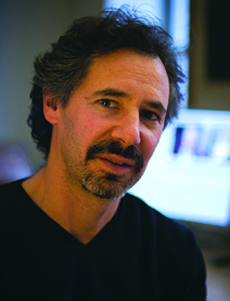|
|
|
Death,
Lies and Videotape
Documentary
follows survivors of Greensboro Massacre
By Janel St.
John
|

Adam
Zucker's film Greensboro:
Closer to the Truth will screen at the Columbus
Jewish Film Festival on March 11, 2008 at 6PM at
the Wexner Center Film/Video Theater. Zucker will
give the keynote address at 8 PM, followed by a panel
discussion.
|
It was
a recipe for disaster. Almost 30 years ago, members
of the Communist Workers Party (CWP) were uniting black
and white industrial workers in Greensboro, North Carolina.
The Klu Klux Klan was not only upset by the ‘racial
mixing,’ they were provoked by CWP’s “Death
to the Klan” literature. When the CWP planned
an Anti-Klan Rally, the two groups collided and disaster
is exactly what happened. The melee, which left five
people dead and 11 injured, has become known as the
Greensboro Massacre.
This
story is retold in producer/director Adam Zucker’s
beautiful and haunting film, Greensboro:
Closer to the Truth.
Though
straight from the pages of American history, the story
has, for the most part, gone untold. “I’ve
been showing the film a lot,” Zucker said. “And
generally speaking, no one knows about what happened
in Greensboro in 1979, and no one knows about 2004 through
2006.”
|
| What
happened in 1979 was captured by four local news camera
crews. The Death to the Klan March, organized by the
CWP, was set to begin in the predominantly black housing
project, Morningside Heights on November 3rd. When a
caravan of Klansmen and members of the American Nazi
Party drove through the protesters...mayhem ensued.
The Klansmen and Nazis emerged from their cars with
an arsenal of guns and opened fire, killing five people.
A
police detective and a police photographer were the
only two officers on site - but they did not intervene.
Other officers arrived 15 minutes after the shooting
stopped. Though recorded on video, the Klan and Nazis
charged, were acquitted of murder by all-white juries.
In 1985, a jury in a federal civil trial found them,
as well as members of the Greensboro Police Department,
jointly liable in one of the deaths.
Twenty-five years later, the Greensboro
film, produced and directed by Adam Zucker, reconnects
with the players in this tragedy- widowed and wounded
survivors, along with their attackers - and chronicles
how their lives have evolved in the long aftermath of
the killings. In 2004, the first Truth and Reconciliation
Commission ever held in the United States is convened
in Greensboro to investigate the Massacre and answer
some questions: What really happened and why? How did
good people accept cold-blooded murder and go on with
business as usual? How could this have happened without
the active involvement and complicity of the police
department?
The
commission was patterned after the South African model
which investigated generations of human rights abuses
under apartheid. The goal of the Greensboro commission
was to elicit testimonials, confessions and acknowledgment
of wrongdoing, and release a report that would help
“heal broken relations . . . distinguishing truth
from falsehood and allowing for . . . public mourning
and forgiveness,” Commissioner Cynthia Brown said.
The
southern city of Greensboro provides a picturesque backdrop
for this tale of lies and deceit and truth and reconciliation.
Greensboro, which originally began as a film
about Truth Commissions, is the first film, initiated
by Zucker, an independent filmmaker and editor, who
also raised the funds for the project.
“As
I began to look into the story and met and talked to
some of the people,” he said, “I became
more interested in the characters and in the concept
that these people had gone through this incredible thing
a quarter of a century ago and had changed and evolved
a great deal. It really became a character-driven thing
about how people change or don’t change over time.”
Redemption and change are the overwhelming themes of
Greensboro. Virgil Griffin, who was and still
is, the Imperial Wizard of the Klan, provided colorful
commentary. Jim Melvin, mayor of Greensboro from, 1971-1981,
is also less than anxious for the city’s dirty
laundry to be aired. But Roland Wayne Wood, former local
leader of the Nazi Party, expressed sorrow that people
were hurt and asked forgiveness for being “a bigot
and a racist.” Pro-labor activist turned Baptist
preacher, Nelson Johnson, is also a different person.
In 1979, Johnson was a key militant and outspoken organizer
of the rally supporting labor and denouncing the Klan.
Greensboro finds him older, slower, and wiser.
Now a grandfather and pastor of Faith Community Church,
Johnson reflected on the mistakes and missteps leading
up to the massacre. He apologized for some name-calling
and lamented on how the rally could have been more appropriately
named “Death to Racism” rather than “Death
to the Klan.”
Though the City of Greensboro did not
embrace the commission’s final report, Greensboro
the film is taking this message of hope and healing
much further than city limits. The actual video footage
of the 1979 shootings is graphic and hard to watch,
but the sheer splendor of human transformation in this
film, far outweighs the tragic events. -
END -
|
|
|
